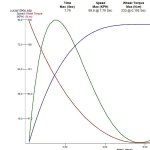OK back on topic. I have 6 motor run caps on order. I found you can put a cap between phases on an induction motor and it will produce ac voltage. So my plan is to play with the cap values to see what I can pull out then rectify it and put the power back into the pack. Hopefully I will get some power back into the pack this way. My plan is to hook one of my induction motors to the end of my roller for a added load. It should work well enough to add a steady load and I am hoping to run the electric motors I'm testing coupled strait to the other end of the induction motor to do motor only testing with the option to use the big roller for an inertia load strait on the motor as well.
Now my question is how do I vary the load or regen from the induction motor? Can I vary the capacitance or can I use a light dimmer in series with the caps??
Now my question is how do I vary the load or regen from the induction motor? Can I vary the capacitance or can I use a light dimmer in series with the caps??




